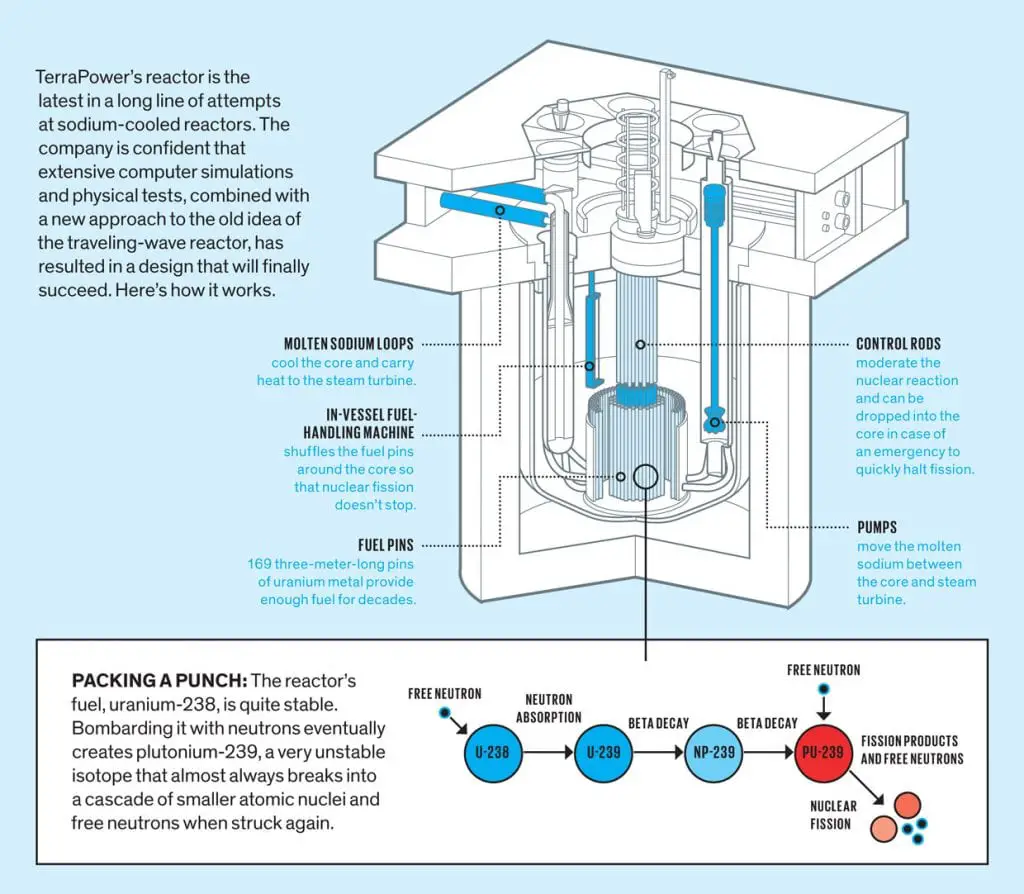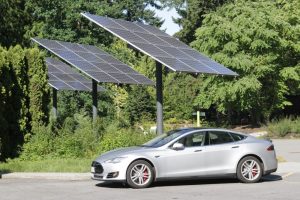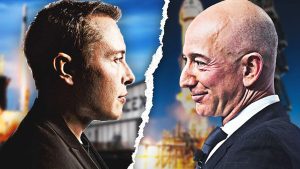The promise of nuclear reactors has always been abundant, safe, inexpensive power. As history has shown, the reality has been very different.
Apart from the environmental disasters of Chernobyl and Fukushima – both rated as category seven disasters, the highest on the existing scale, the issue of nuclear waste hangs over us like the sword of Damocles.
And that same waste, together with the high maintenance and security costs of nuclear reactors has meant that the promised ‘cheap, abundant power’ has remained an illusion.
Contents
Just 2 of 99 known nuclear accidents
While Chernobyl and Fukushima are ‘headline grabbers’, there have actually been 99 other known nuclear ‘accidents’ – 56 of which have occurred in the USA!
The disasters and costs have quelled the global appetite for nuclear power with some countries such as Germany, legislating to close all nuclear power plants within the next 4 – 5 years.
Yet if we are to find ways of slowing global warming, we need ‘now’ solutions that provide sustainable, clean, base-load power. Wave energy and tidal power continue to show great promise but neither can solve global power needs.
Solar combined with pump-hydro also holds great promise but once again, isn’t a global solution.
Geothermal is another exciting possibility but yet again, cannot, at least in the foreseeable future, provide a global solution.
Advances in technology – especially in the field of storage – may well provide the permanent solution. After all, solar energy is abundant and free when the sun shines. But that daily sunset is the problem and will remain so until we are able to return that vast reserve of energy to the grid after dark.
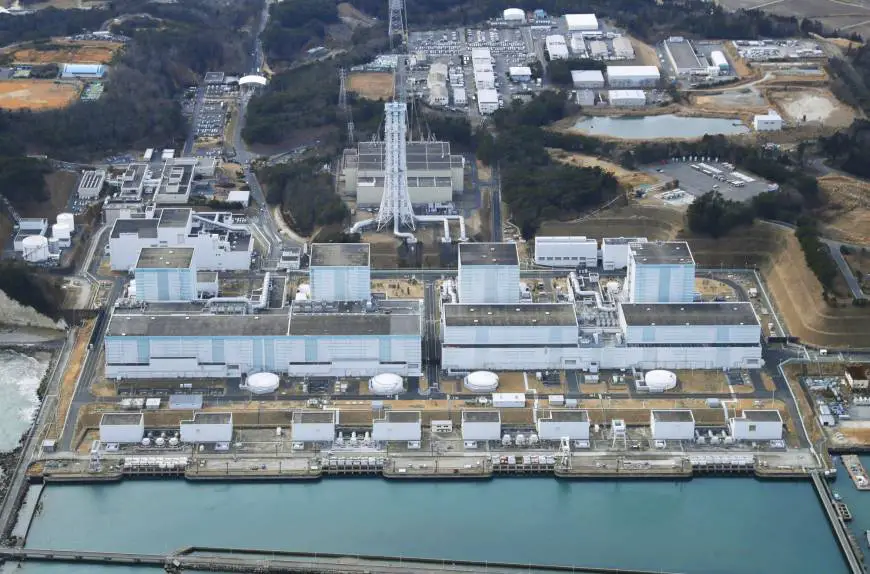
Coincidentally, as I write this article, TEPKO has announced that it is considering closing and decommissioning the remaining Fukushima nuclear plant which sits 12 kilometres to the south of the crippled No. 1 plant.
The No. 2 plant was also damaged in the 2011 earthquake but a meltdown was averted. None-the-less, the reactors have been offline since, due primarily to community concerns over safety.
So the question remains, is nuclear technology capable of delivering on the original promise?
Pipe Dream or Nuclear Salvation?
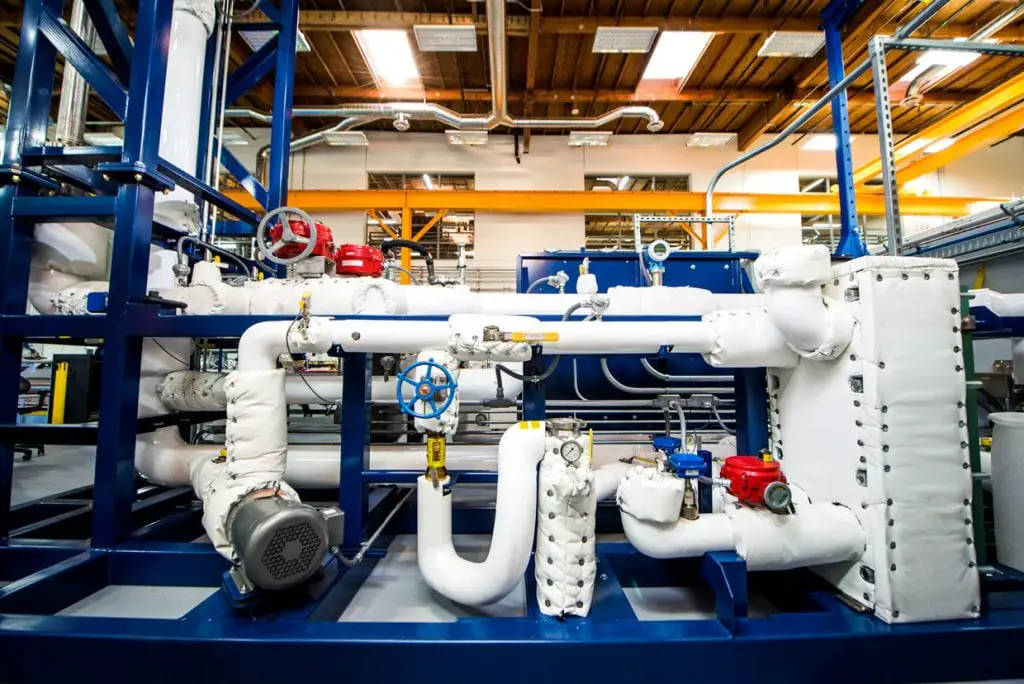
Table tennis isn’t meant to be played at Mach 2. At twice the speed of sound, the ping-pong ball punches a hole straight through the paddle. The engineers at TerraPower, a startup that has designed an advanced nuclear power reactor, use a pressurized-air cannon to demonstrate that very point to visitors. The stunt vividly illustrates a key concept in nuclear fission: Small objects traveling at high speed can have a big impact when they hit something seemingly immovable.
And perhaps there is a larger point being made here, too—one about a small and fast-moving startup having a big impact on the electric-power industry, which for many years also seemed immovable.
In a world defined by climate change, many experts hope that the electricity grid of the future will be powered entirely by solar, wind, and hydropower. Yet few expect that clean energy grid to manifest soon enough to bring about significant cuts in greenhouse gases within the next few decades. Solar- and wind-generated electricity are growing faster than any other category; nevertheless, together they accounted for less than 2 percent of the world’s primary energy consumption in 2015, according to the Renewable Energy Policy Network for the 21st Century.
To build a bridge to that clean green grid of the future, many experts say we must depend on fission power. Among carbon-free power sources, only nuclear fission reactors have a track record of providing high levels of power, consistently and reliably, independent of weather and regardless of location.
Yet commercial nuclear reactors have barely changed since the first plants were commissioned halfway through the 20th century. Now, a significant fraction of the world’s 447 operable power reactors are showing their age and shortcomings, and after the Fukushima Daiichi disaster in Japan seven years ago, nuclear energy is in a precarious position. Between 2005 and 2015, the world share of nuclear in energy consumption fell from 5.73 to 4.44 percent. The abandonment of two giant reactor projects in South Carolina in the United States and the spiraling costs of completing the Hinkley Point C reactor in the United Kingdom, now projected to cost an eye-watering £20.3 billion (US $27.4 billion), have added to the malaise.
Elsewhere, there is some nuclear enthusiasm: China’s 38 reactors have a total of 33 gigawatts of nuclear capacity, and the country has plans to add an additional 58 GW by 2024. At the moment, some 50 power reactors are under construction worldwide. These reactors, plus an additional 110 that are planned, would contribute some 160 GW to the world’s grids, and avoid the emission of some 500 million metric tons of carbon dioxide every year. To get that kind of cut in greenhouse gases in the transportation sector, you’d have to junk more than 100 million cars, or roughly all the passenger cars in France, Germany, and the United Kingdom.
Against this backdrop, several U.S. startups are pushing new reactor designs they say will address nuclear’s major shortcomings. In Cambridge, Mass., a startup called Transatomic Power is developing a reactor that runs on a liquid uranium fluoride–lithium fluoride mixture. In Denver, Gen4 Energy is designing a smaller, modular reactor that could be deployed quickly in remote sites.
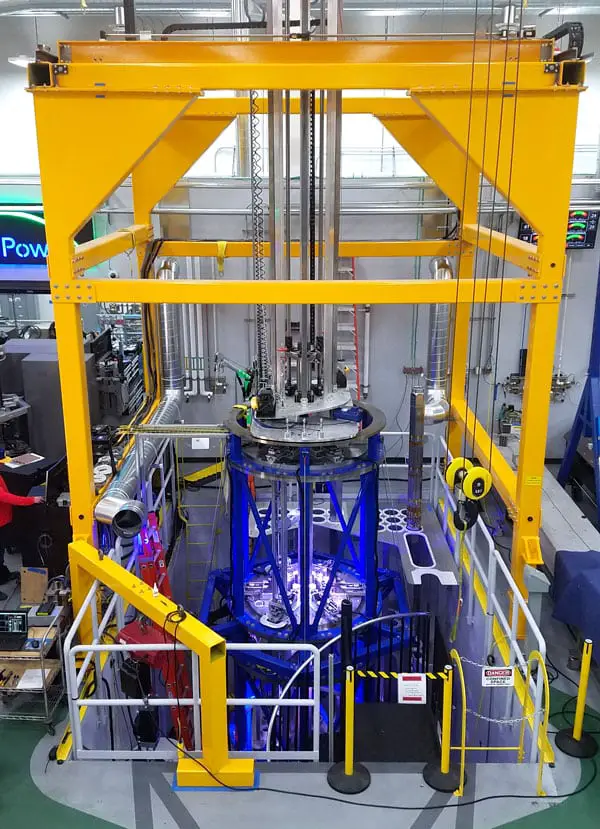
Hardcore Testing: The full-scale reactor-core test assembly is more than three stories tall.
In this cluster of nuclear startups, TerraPower, based in Bellevue, Wash., stands out because it has deep pockets and a connection to nuclear-hungry China. Development of the reactor is being funded in part by Bill Gates, who serves as the company’s chairman. And to prove that its design is viable, TerraPower is poised to break ground on a test reactor next year in cooperation with the China National Nuclear Corp.
To reduce its coal dependence, China is racing to add over 250 GW of capacity by 2020 from renewables and nuclear. TerraPower’s president, Chris Levesque, sees an opening there for a nuclear reactor that is safer and more fuel efficient. He says the reactor’s fuel can’t easily be used for weapons, and the company claims that its reactor will generate very little waste. What’s more, TerraPower says that even if the reactor were left unattended, it wouldn’t suffer a calamitous mishap. For Levesque, it’s the perfect reactor to address the world’s woes. “We can’t seriously mitigate carbon and bring 1 billion people out of energy poverty without nuclear,” he says.
The TerraPower reactor is a new variation on a design that was conceived some 60 years ago by a now-forgotten Russian physicist, Saveli Feinberg. Following World War II, as the United States and the Soviet Union stockpiled nuclear weapons, some thinkers were wondering if atomic energy could be something other than a weapon of war. In 1958, during the Second International Conference on Peaceful Uses of Atomic Energy, held in Geneva, Feinberg suggested that it would be possible to construct a reactor that produced its own fuel.
Feinberg imagined what we now call a breed-and-burn reactor. Early proposals featured a slowly advancing wave of nuclear fission through a fuel source, like a cigar that takes decades to burn, creating and consuming its fuel as the reaction travels through the core. But Feinberg’s design couldn’t compete during the bustling heyday of atomic energy. Uranium was plentiful, other reactors were cheaper and easier to build, and the difficult task of radioactive-waste disposal was still decades away.
The breed-and-burn concept languished until Edward Teller, the driving force behind the hydrogen bomb, and astrophysicist Lowell Wood revived it in the 1990s. In 2006, Wood became an adviser to Intellectual Ventures, the intellectual property and investment firm that is TerraPower’s parent company. At the time, Intellectual Ventures was exploring everything—fission, fusion, renewables—as potential solutions to cutting carbon. So Wood suggested the traveling-wave reactor (TWR), a subtype of the breed-and-burn reactor design. “I expected to find something wrong with it in a few months and then focus on renewables,” says John Gilleland, the chief technical officer of TerraPower. “But I couldn’t find anything wrong with it.”
That’s not to say the reactor that Wood and Teller designed was perfect. “The one they came up with in the ’90s was very elegant, but not practical,” says Gilleland. But it gave TerraPower engineers somewhere to start, and the hope that if they could get the reactor design to work, it might address all of fission’s current shortcomings.
Others have been less optimistic. “There are multiple levels of problems with the traveling-wave reactor,” says Arjun Makhijani, the president of the Institute for Energy and Environmental Research. “Maybe a magical new technology could come along for it, but hopefully we don’t have to rely on magic.” Makhijani says it’s hard enough to sustain a steady nuclear reaction without the additional difficulty of creating fuel inside the core, and notes that the techniques TerraPower will use to cool the core have largely failed in the past.
The TerraPower team, led by Wood and Gilleland, first tackled these challenges using computer models. In 2009, they began building the Advanced Reactor Modeling Interface (ARMI), a digital toolbox for simulating deeply customizable reactors. With ARMI, the team could specify the size, shape, and material of every reactor component, and then run extensive tests. In the end, they came away with what they believe is a practical model of a breed-and-burn TWR first proposed by Feinberg six decades ago. As Levesque recalls, he joined TerraPower when the team approached him with remarkable news: “Hey, we think we can do the TWR now.”
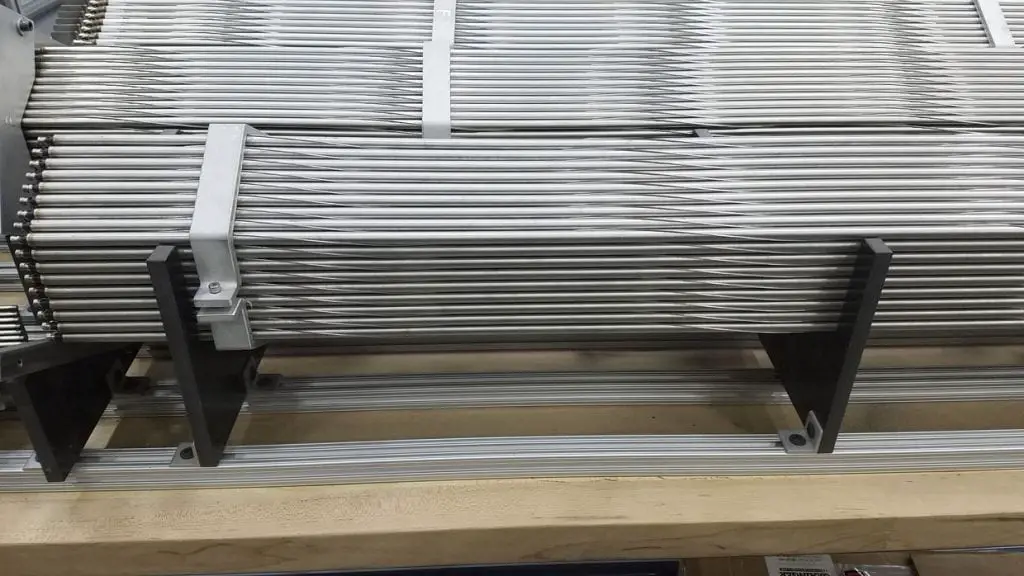
Fuel for Thought: Mock fuel pins (not made of radioactive uranium!) sit ready for validation tests.
To understand why the TWR stymied physicists for decades, first consider that today’s reactors rely on enriched uranium, which has a much higher ratio of the fissile isotope of uranium (U-235) to its more stable counterpart (U-238) than does a natural sample of uranium.
When a passing neutron strikes a U-235 atom, it’s enough to split the atom into barium and krypton isotopes with three neutrons left over (like that high-speed ping-pong ball punching through a sturdy paddle). Criticality occurs when enough neutrons hit enough other fissile uranium atoms to create a self-sustaining nuclear reaction. In today’s reactors, the only way to achieve criticality is to have a healthy abundance of U-235 atoms in the fuel.
In contrast, the TWR will be able to use depleted uranium, which has far less U-235 and cannot reach criticality unassisted. TerraPower’s solution is to arrange 169 solid uranium fuel pins into a hexagon. When the reaction begins, the U-238 atoms absorb spare neutrons to become U-239, which decays in a matter of minutes to neptunium-239, and then decays again to plutonium-239. When struck by a neutron, Pu-239 releases two or three more neutrons, enough to sustain a chain reaction.
It also releases plenty of energy; after all, Pu-239 is the primary isotope used in modern nuclear weapons. But Levesque says the creation of Pu-239 doesn’t make the reactor a nuclear-proliferation danger—just the opposite. Pu-239 won’t accumulate in the TWR; instead, stray neutrons will split the Pu-239 into a cascade of fission products almost immediately.
In other words, the reactor breeds the highly fissile plutonium fuel it needs right before it burns it, just as Feinberg imagined so many decades ago. Yet the “traveling wave” label refers to something slightly different from the slowly burning, cigar-style reactor. In the TWR, an overhead crane system will maintain a reaction within a ringed portion of the core by moving pins into and out of that zone from elsewhere in the core, like a very large, precise arcade claw machine.
To generate electricity, the TWR uses a more complicated system than today’s reactors, which use the core’s immense heat to boil water and drive a steam turbine to generate usable electricity. In the TWR, the heat will be absorbed by a looping stream of liquid sodium, which leaves the reactor core and then boils water to drive the steam turbine.
But therein lies a major problem, says Makhijani. Molten sodium can move more heat out of the core than water, and it’s actually less corrosive to metal pipes than hot water is. But it’s a highly toxic metal, and it’s violently flammable when it encounters oxygen. “The problem around the sodium cooling, it’s proved the Achilles’ heel,” he says.
Makhijani points to two sodium-cooled reactors as classic examples of the scheme’s inherent difficulties. In France, Superphénix struggled to exceed 7 percent capacity during most of its 10 years of operation because sodium regularly leaked into the fuel storage tanks. More alarmingly, Monju in Japan shut down less than a year after it achieved criticality when vibrations in the liquid sodium loop ruptured a pipe, causing an intense fire to erupt as soon as the sodium made contact with the oxygen in the air. “Some have worked okay,” says Makhijani. “Some have worked badly, and others have been economic disasters.”
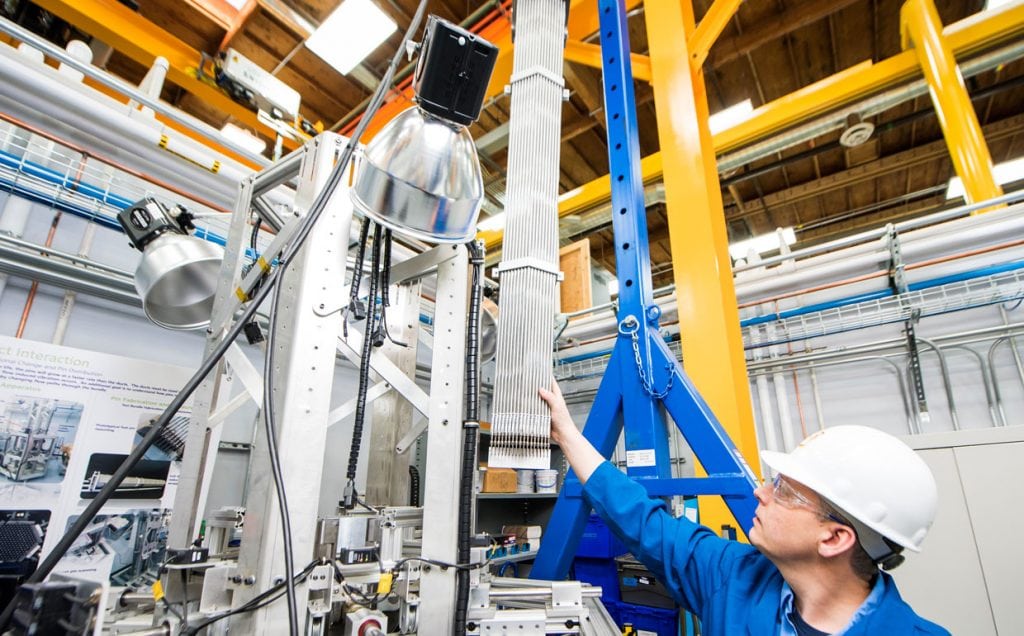
Today, TerraPower’s lab is filled with bits of fuel pins and reactor components. Among other things, the team has been testing how molten sodium will flow through the reactor’s pipes, how it will corrode those pipes, even the inevitable expansion of all of the core’s components as they are subjected to decades of heat—all problems that have plagued sodium-cooled reactors in the past. TerraPower’s engineers will use what they learn from the results when building their test reactor—and they’ll find out if their design really works.
The safety of the TerraPower reactor stems in part from inherent design factors. Of course, all power reactors are designed with safety systems. Each one has a coping time, which indicates how long a stricken reactor can go on without human intervention before catastrophe occurs. Ideas for so-called inherently safe reactors have been touted since the 1980s, but the goal for TerraPower is a reactor that relies on fundamental physics to provide unlimited coping time.
The TWR’s design features some of the same safety systems standard to nuclear reactors. In the case of an accident in any reactor, control rods crafted from neutron-absorbing materials like cadmium plummet into the core and halt a runaway chain reaction that could otherwise lead to a core meltdown. Such a shutdown is called a scram.
Scramming a reactor cuts its fission rate to almost zero in a very short time, though residual heat can still cause a disaster. At Chernobyl, some of the fuel rods fractured during the scram, allowing the reactor to continue to a meltdown. At Fukushima Daiichi, a broken coolant system failed to transfer heat away from the core quickly enough. That’s why the TerraPower team wanted to find a reactor that could naturally wind down, even if its safety systems failed.
TerraPower’s reactor stays cool because its pure uranium fuel pins move heat out of the core much more effectively than the fuel rods in today’s typical reactors. If even that isn’t enough to prevent a meltdown, the company has an ace up its sleeve. As Gilleland explains, the fuel pins will expand when they get too hot—just enough so that neutrons can slip past the fuel pins without hitting more Pu-239, thereby slowing the reaction and cooling the core automatically.
Because the TWR burns its fuel more efficiently, the TerraPower team also claims it will produce less waste. The company says a 1,200-MW reactor will generate only 5 metric megatons of waste per gigawatt-year, whereas a typical reactor today produces 21 metric megatons per gigawatt-year. If that number is right, the reactor could address the ongoing storage problem by drastically reducing the amount of generated waste, which remains highly radioactive for thousands of years. More than 60 years into the nuclear age, only Finland and Sweden have made serious progress in building deep, permanent repositories, and even those won’t be ready until the 2020s.
TerraPower plans to break ground on its test reactor next year in China. If all goes well, this reactor will be operational by the mid-2020s. But even if TerraPower’s reactor succeeds wildly, it will take 20 years or more for the company to deploy large numbers of TWRs. Thus for the next couple of decades, the world’s utilities will have no choice but to rely on fossil fuels and conventional nuclear reactors for reliable, round-the-clock electricity.
Fission will probably not be the final answer. After decades of always being 30 years away, nuclear fusion may finally come into its own. Societies will be able to depend on renewables more heavily as storage and other technologies make them more reliable. But for the coming decades, some analysts insist, nuclear fission’s reliability and zero emissions are the best choice to shoulder the burden of the world’s rapidly electrifying economies.
“I don’t think we should think about the solution for midcentury being the solution for all time,” says Jane Long, a former associate director at Lawrence Livermore National Laboratory, in California. “If I were in charge of everything, I would say, have a long-term plan to get [all of our electricity] from sunlight—there’s enough of it. For the near term, we shouldn’t be taking things with big impact off the table, like nuclear.”
As the globe warms and the climate becomes increasingly unstable, the argument for nuclear will become more obvious, Long says. “It’s got to come to the point where people realize how much we need this.”
Source: https://www.ieee.org/
Perception or reality?
What are your thoughts on nuclear power? Do you think it has a future? More importantly, do you feel that nuclear risks are less than or greater than the global warming certainties we are facing right now? Share your thoughts with us in the comments box below…

